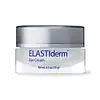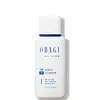What's inside
What's inside
 Key Ingredients
Key Ingredients

 Benefits
Benefits

 Concerns
Concerns

 Ingredients Side-by-side
Ingredients Side-by-side

Water
Skin ConditioningC12-15 Alkyl Benzoate
AntimicrobialEthylhexyl Palmitate
EmollientC13-15 Alkane
SolventCyclopentasiloxane
EmollientGlycerin
HumectantGlyceryl Stearate
EmollientPEG-100 Stearate
Propylene Glycol
HumectantStearyl Alcohol
EmollientDipropylene Glycol Dibenzoate
EmollientDimethicone
EmollientPPG-15 Stearyl Ether Benzoate
EmollientPolyacrylamide
Cetyl Alcohol
EmollientCetyl Dimethicone
EmollientC13-14 Isoparaffin
EmollientXanthan Gum
EmulsifyingMagnesium Aluminum Silicate
AbsorbentLaureth-7
EmulsifyingTocopheryl Acetate
AntioxidantGlycyrrhiza Glabra Root Extract
BleachingAlgae Extract
EmollientVaccinium Angustifolium Fruit Extract
Skin ProtectingPhenoxyethanol
PreservativeMethylparaben
PreservativeEthylparaben
PreservativeButylparaben
MaskingPropylparaben
PreservativeIsobutylparaben
AntimicrobialHdi/Trimethylol Hexyllactone Crosspolymer
Sodium Hydroxide
BufferingMalonic Acid
BufferingMalachite
Skin ConditioningZinc Carbonate
Silica
AbrasiveTalc
AbrasiveAlumina
AbrasiveMica
Cosmetic ColorantCI 77891
Cosmetic ColorantCI 77491
Cosmetic ColorantCI 42090
Cosmetic ColorantWater, C12-15 Alkyl Benzoate, Ethylhexyl Palmitate, C13-15 Alkane, Cyclopentasiloxane, Glycerin, Glyceryl Stearate, PEG-100 Stearate, Propylene Glycol, Stearyl Alcohol, Dipropylene Glycol Dibenzoate, Dimethicone, PPG-15 Stearyl Ether Benzoate, Polyacrylamide, Cetyl Alcohol, Cetyl Dimethicone, C13-14 Isoparaffin, Xanthan Gum, Magnesium Aluminum Silicate, Laureth-7, Tocopheryl Acetate, Glycyrrhiza Glabra Root Extract, Algae Extract, Vaccinium Angustifolium Fruit Extract, Phenoxyethanol, Methylparaben, Ethylparaben, Butylparaben, Propylparaben, Isobutylparaben, Hdi/Trimethylol Hexyllactone Crosspolymer, Sodium Hydroxide, Malonic Acid, Malachite, Zinc Carbonate, Silica, Talc, Alumina, Mica, CI 77891, CI 77491, CI 42090
Water
Skin ConditioningCocamidopropyl Betaine
CleansingSodium Lauroyl Oat Amino Acids
CleansingSodium Laureth Sulfate
CleansingGlycerin
HumectantAloe Barbadensis Sprout
HumectantGlycereth-7
HumectantPrunus Armeniaca Kernel Oil
MaskingPanthenol
Skin ConditioningAcrylates/C10-30 Alkyl Acrylate Crosspolymer
Emulsion StabilisingOleyl Lactate
EmollientEthoxydiglycol
HumectantTriethanolamine
BufferingSalvia Officinalis Extract
AntimicrobialBorago Officinalis Extract
EmollientPhenoxyethanol
PreservativeMethylparaben
PreservativePropylparaben
PreservativeEthylparaben
PreservativeButylparaben
MaskingSaponins
CleansingParfum
MaskingCI 19140
Cosmetic ColorantWater, Cocamidopropyl Betaine, Sodium Lauroyl Oat Amino Acids, Sodium Laureth Sulfate, Glycerin, Aloe Barbadensis Sprout, Glycereth-7, Prunus Armeniaca Kernel Oil, Panthenol, Acrylates/C10-30 Alkyl Acrylate Crosspolymer, Oleyl Lactate, Ethoxydiglycol, Triethanolamine, Salvia Officinalis Extract, Borago Officinalis Extract, Phenoxyethanol, Methylparaben, Propylparaben, Ethylparaben, Butylparaben, Saponins, Parfum, CI 19140
Ingredients Explained
These ingredients are found in both products.
Ingredients higher up in an ingredient list are typically present in a larger amount.
Butylparaben is a preservative, is a paraben, and is not reef safe. It can be bad for dry skin and worsen eczema.
Ethylparaben is a preservative, is a paraben, and is not reef safe.
Glycerin is already naturally found in your skin. It helps moisturize and protect your skin.
A study from 2016 found glycerin to be more effective as a humectant than AHAs and hyaluronic acid.
As a humectant, it helps the skin stay hydrated by pulling moisture to your skin. The low molecular weight of glycerin allows it to pull moisture into the deeper layers of your skin.
Hydrated skin improves your skin barrier; Your skin barrier helps protect against irritants and bacteria.
Glycerin has also been found to have antimicrobial and antiviral properties. Due to these properties, glycerin is often used in wound and burn treatments.
In cosmetics, glycerin is usually derived from plants such as soybean or palm. However, it can also be sourced from animals, such as tallow or animal fat.
This ingredient is organic, colorless, odorless, and non-toxic.
Glycerin is the name for this ingredient in American English. British English uses Glycerol/Glycerine.
Learn more about GlycerinMethylparaben is a preservative and is a paraben. It is used to prevent the growth of fungus, mold, and other harmful bacteria. Parabens are chemicals used as preservatives in both cosmetics and food.
Methylparaben can be synthetically created. It can also be found naturally in some fruits, such as blueberries.
Oftentimes, Methylparaben is combined with other parabens to help increase the shelf life.
The safety of Methylparaben is currently being studied. While ongoing studies are looking into the safety of parabens, the results have been very mixed. Some studies have not found Methylparaben to be harmful.
Learn more about MethylparabenPhenoxyethanol is a preservative that has germicide, antimicrobial, and aromatic properties. Studies show that phenoxyethanol can prevent microbial growth. By itself, it has a scent that is similar to that of a rose.
It's often used in formulations along with Caprylyl Glycol to preserve the shelf life of products.
Propylparaben is a preservative and is a paraben with antifungal and antimicrobial properties.
This ingredient can be naturally found in plants and insects, but most of it is synthetically manufactured for human use. In cosmetics, it is usually created by reacting para-aminobenzoic acid and propanol (an alcohol).
You can usually find this ingredient in water-based products.
Parabens have come under controversy due to the claim they are hormone disruptors. Studies show conflicting results. We recommend speaking with a professional if you have any concerns.
Propylparaben is commonly found in food, medicine, and cosmetics.
Learn more about PropylparabenWater. It's the most common cosmetic ingredient of all. You'll usually see it at the top of ingredient lists, meaning that it makes up the largest part of the product.
So why is it so popular? Water most often acts as a solvent - this means that it helps dissolve other ingredients into the formulation.
You'll also recognize water as that liquid we all need to stay alive. If you see this, drink a glass of water. Stay hydrated!
Learn more about Water